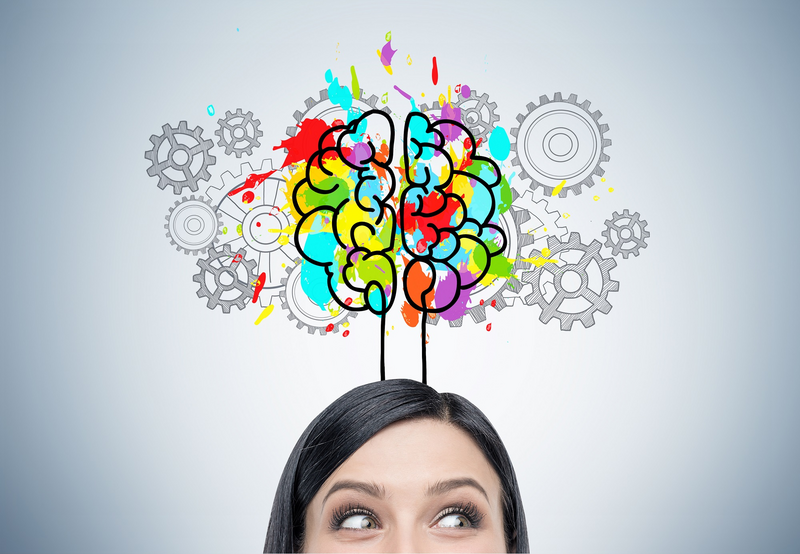ATD Blog
For the Love of the Brain—Our Best Friend in Talent Development
Thu Feb 23 2023

Talent development professionals bring a wide array of tools to the trade, such as delivery modality, content, applied learning techniques, and learning circles. And they all matter. But there’s one aspect of human development that’s often ignored, and it’s sitting right on top of us, literally. The human brain.
Weighing only about three pounds and comprised of 60 percent fatty cells, everything we do begins and ends with the brain. When we’re awake, the brain is on constant watch, interpreting stimuli from millions of sources to help us navigate a complex and sometimes dangerous environment. Electrical impulses generated by neurons send information through the brain at an astonishing 268 miles per hour; this not only helps us select our coffee at Starbucks but also keeps us from stepping into an intersection before it is safe to do so.
We may think we’re giving the brain a rest when we sleep, but nothing could be further from the truth. Brain activity during sleep is remarkable. The organ works to support learning and memory during our periods of rest through a careful balance of what scientists refer to as slow-wave sleep (SWS) and rapid eye movement (REM). We initially experience SWS when we fall asleep as we relax and breath more slowly. Then, as REM sleep begins, the brain’s activity levels increase significantly, the body’s muscles are paralyzed, an inconsistent breathing pattern and heart rate begin, and dreaming takes place. This symphony of neurological activity rests the brain and prepares it to learn.
So what makes the brain learn well? Through a series of experiments, neuroscientists uncovered remarkable evidence of how the brain learns and stores knowledge. Much of this research focused on brain synapses, their connection, and their resulting strength. Scientists have since discovered that synapses firing together work at one level, but wiring together (ensuring deep learning and memory) requires even more bodily coordination. Retention and application of material in our developmental programs depends not only on the brain, but on our own experiences, emotions, vulnerabilities, attention, and drive. This has significant implications for trainers and workforce developers.
Based on what we know about the brain, here are a few ideas to consider for enhanced learning:
Question assumptions. Because we are only partially aware of any one thing at any given time, most of what we say, think, and do is unconscious. Consider logging in to your computer or driving to the store. Feels second nature, right? Yet thousands of assumptions and bits of data go into those simple activities. Create space in the classroom for exploring the unconscious biases and assumptions that drive our day-to-day decisions.
Don’t avoid emotions. Emotions strengthen memory and learning, and drawing from the right side of the brain can enhance the learning experience. Storytelling, exploring childhood experiences, and being open to personal success and failures can connect students with content and one another.
Remember that learning begets learning. Creating classroom environments that stimulate the desire to learn puts students on the path to lifelong learning. The more we find fulfilment in learning, the more we keep learning as we age. And don’t forget the need for application in the classroom. Simple PowerPoint presentations don’t inspire and lead to poor retention. Students must be exposed to real-world applications of material.
Build relationships in the group. A supportive social structure in the classroom creates a fertile environment for the brain to grow. Take time away from course content to allow for personal connections among those in the group. The resulting trust and familiarity allow for more curiosity (necessary for learning and survival) and better networking.
Encourage presence. So many of our students work excessive hours, and the tendency is for them to multitask their way through training sessions. The occasional phone call “they have to answer” or the pop-up meeting “they have to attend” detracts from their ability to absorb and apply content. Set the expectation that presence matters from the outset.
Let the learning emerge. The brain has an uncanny way of finding the content when we let it. Louis Cozolino, PhD, professor of psychology at Pepperdine University and author of The Healthy Aging Brain and The Neuroscience of Human Relationships once wrote that learning is enhanced by emphasizing the big picture—and then allowing students to discover the details for themselves. Let it happen.
As talent developers, we have many options at our disposal. But by remembering the importance of the brain and the role it plays, we can make better decisions as to how we design and implement our training programs.

